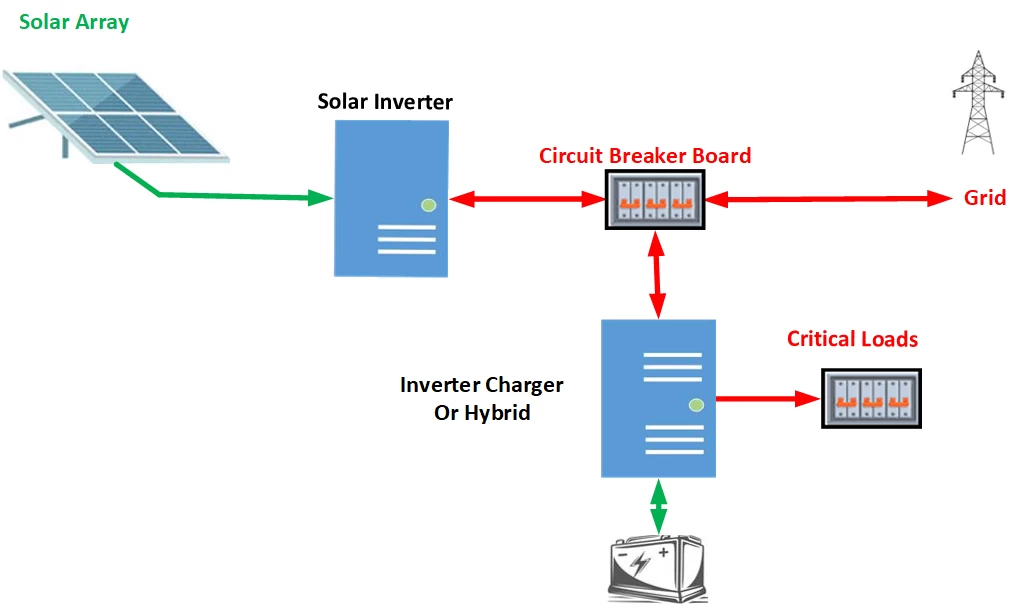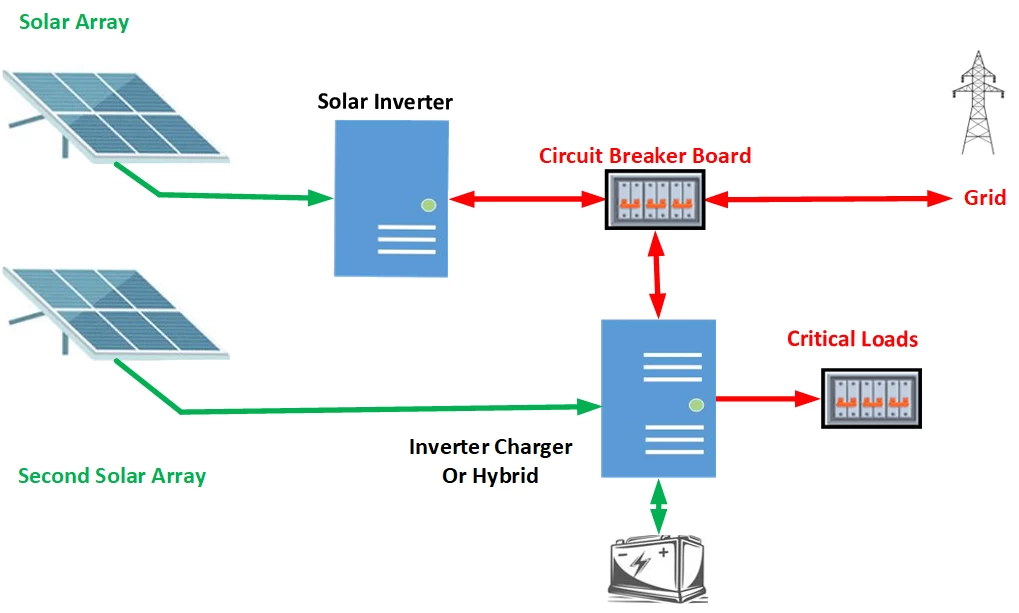AC & DC Coupled Systems
For the purposes of this blog I'm only looking at AC and DC coupling as a configuration for adding battery storage to an existing grid-tie system. This has particular application in Australia where many solar installations do not have batteries and state governments are introducing battery rebates to help overcome this situation. We don't have any energy rebates here in NZ but their are grid-tie systems in place where a retofit battery storage will certainly be beneficial.
AC coupling is where the energy generated by the solar panels is inverted by the solar inverter before being fed through an AC charger for battery charging. So energy stored in the battery must be inverter three times before use in the household, making it less efficient than DC coupling. The grid can also be used for charging through this devise. This system is generally a more straightforward install which should reduce labour costs.
Basic schematic diagram of a typical A/C coupled battery storage installation

It's an easy, if not inexpensive, way to add a so-called AC battery to an existing solar inverter system. These are single enclosures containing the lithium batteries with BMS and a battery inverter made popular by the Tesla power wall. They're not suitable for an off-grid situation because of the limitations of their transformer-less design, and lack of sufficient power for a complete off-grid home. It's better to use a low frequency inverter with a transformer in an off-grid situation.
The DC-coupled system is where there's a direct DC feed from solar to battery via the hybrid inverter. This system is more efficient than an AC-coupled one in charging the batteries. If the solar the array is already electrically split into two strings it makes the perfect opportunity to supply a second inverter with half the array and a set of batteries. Upfront installation costs might be higher due to a more complicated installation.
